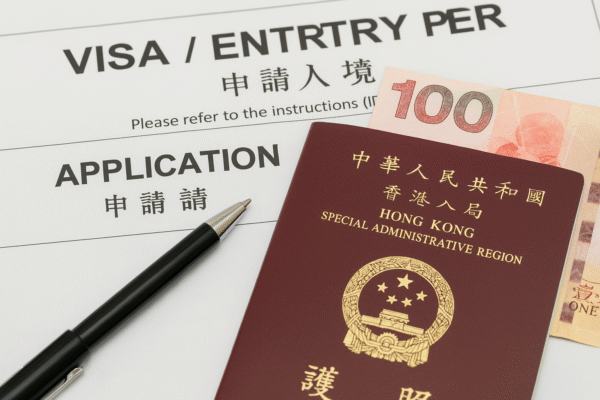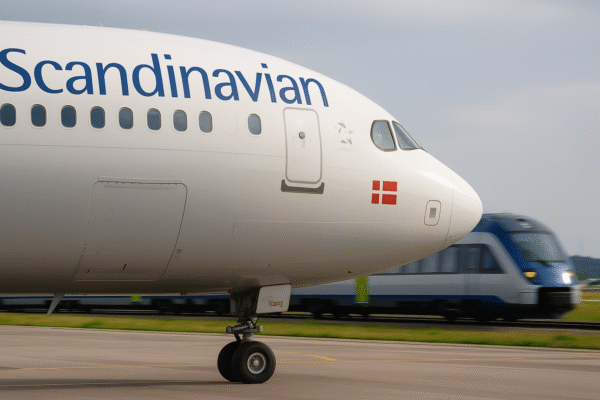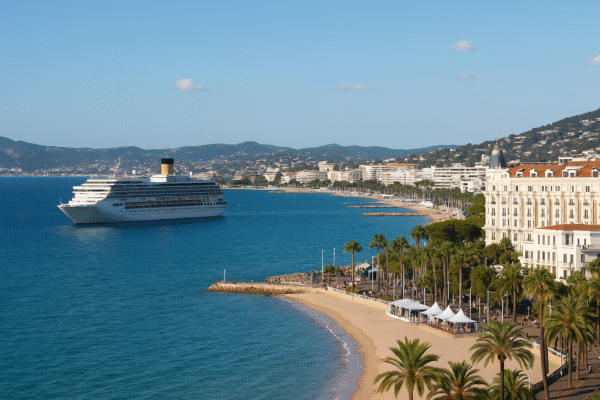Cannes Sets Course for Sustainable Tourism
Cannes, France — In a decisive move to safeguard its iconic coastline, the city of Cannes has announced new regulations to limit large cruise ships, starting January 1, 2026. Under the upcoming policy, only vessels carrying 1,000 passengers or fewer will be permitted to dock directly at the city’s port. Additionally, a daily cap of 6,000 disembarked passengers will be enforced to ease congestion in the city and surrounding areas.
These regulations aim to balance the economic importance of cruise tourism with the urgent need to protect the natural and cultural heritage of the French Riviera. The decision comes amid increasing global awareness of overtourism and its negative effects on coastal communities.
Why Cannes Is Taking Action
For decades, Cannes has been a magnet for international cruise tourism, attracting hundreds of thousands of visitors each year. However, the growing number of mega-ships carrying thousands of passengers has raised serious concerns about overcrowding, environmental degradation, and strain on local infrastructure.
The local government, led by Mayor David Lisnard, emphasized that the intent is not to ban cruise tourism but to create a more sustainable model that preserves the city’s charm and natural beauty. These measures are expected to reduce air and water pollution, limit noise, and help protect the delicate marine ecosystem along the coast.
Environmental advocates have welcomed the initiative, pointing out that large cruise ships emit high levels of pollutants such as sulfur dioxide and nitrogen oxides. These emissions not only affect marine biodiversity but also contribute to poor air quality in densely visited coastal areas.
Key Points of the New Regulations
The policy framework for 2026 includes several key measures designed to transform the way cruise tourism is managed in Cannes:
- Passenger limits: Only ships carrying 1,000 or fewer passengers will be allowed to dock at the port.
- Daily disembarkation cap: A maximum of 6,000 passengers will be allowed to step ashore in a single day.
- Tendering for larger ships: Ships exceeding the 1,000-passenger limit will need to anchor offshore, with passengers ferried to the port by smaller boats.
- Environmental focus: By reducing ship size and overall daily visitor volume, the city aims to cut emissions, protect water quality, and maintain the visual appeal of its harbor.
These steps align with a broader strategy across Europe to mitigate the impact of mass tourism on fragile urban and coastal ecosystems.
Economic and Social Balance
Cannes’ economy thrives on tourism, with cruise passengers contributing significantly to local businesses such as restaurants, boutiques, and cultural attractions. However, residents have increasingly voiced concerns about congestion, environmental pressures, and changes to the city’s character during peak travel seasons.
Mayor Lisnard highlighted that the policy is designed to find a balance between economic vitality and ecological stewardship. The reduced capacity will allow for better crowd management while ensuring that tourism remains a positive force for the community.
Impact on the French Riviera
The new restrictions will not only reshape cruise tourism in Cannes but will also influence the broader French Riviera tourism strategy. The region has long been synonymous with luxury travel, world-class beaches, and cultural events such as the Cannes Film Festival.
By addressing the pressures of overtourism, Cannes aims to create a more sustainable visitor experience. Residents are expected to benefit from less congestion, cleaner air, and a healthier coastal environment, while visitors will enjoy a less crowded and more authentic atmosphere.
Part of a Wider European Movement
Cannes joins a growing list of European cities implementing strict controls on cruise tourism. Venice introduced a ban on large ships in its lagoon in 2021, citing the need to protect its fragile waterways and heritage sites. Barcelona and Amsterdam have adopted similar measures, reflecting a collective effort to prioritize environmental and cultural preservation over unrestricted growth.
By following this trend, Cannes is positioning itself as a leader in responsible tourism management, setting a precedent for other global destinations facing the challenges of mass tourism.
Looking Ahead
The regulations, set to take effect in 2026, mark a new chapter for tourism on the French Riviera. Cruise companies will need to adjust itineraries and scheduling, potentially shifting larger vessels to nearby deepwater ports or using tenders to transfer passengers.
Travel experts anticipate that these changes will encourage longer, higher-quality stays by visitors, with tourists more likely to explore the city at a relaxed pace, benefiting both the local economy and the visitor experience.
Conclusion
The Cannes cruise ship restrictions represent a significant step toward a sustainable tourism future for the French Riviera. By capping passenger numbers and limiting large vessels, the city is protecting its unique coastal environment while continuing to welcome visitors from around the globe.
This forward-thinking approach ensures that Cannes’ natural beauty, cultural heritage, and vibrant economy can thrive in harmony. As global tourism trends evolve, Cannes stands as a model for balancing growth with environmental responsibility — a move that will likely inspire similar initiatives in other destinations worldwide.
For more travel news like this, keep reading Global Travel Wire
















